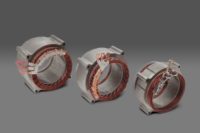LISLE, IL—Molex LLC, a leading supplier of connectors, adapters and cable accessories, has released the results of its latest global survey of automotive OEMs and suppliers. It identifies the top trends and roadblocks impacting innovation in electric vehicles. Survey participants responded to questions relating to EVs and electric systems such as battery management systems, charging stations, power electronics, sensors and wiring.
A majority of respondents (94 percent) believe that electrification goes well beyond a move to electric motors and that electrification is on the cusp of a huge breakthrough in the auto industry. However, despite that momentum, many respondents claim that engineers face numerous challenges with electrification.
"Automobile electrification is a complex undertaking, involving much more than transitioning from internal combustion to electric engines,” says Kevin Alberts, senior vice president and general manager of Molex’s power and signal business division. “The quickening pace of innovation across all aspects of electrification is being propelled by highly sophisticated engineering and fully integrated manufacturing that leverages ultrasonic welding, sustainable production and automation to speed delivery of next-generation electrification [technology].
“Respondents agree that innovations in electrification will yield widespread improvements in vehicle features, including autonomous and driver assistance (53 percent), safety (43 percent), total cost of ownership (41 percent), vehicle charging time (39 percent) and vehicle range (37 percent),” explains Alberts. “Still, challenges persist in improving vehicle charging time (31 percent) and vehicle range (29 percent), as well as autonomous and driver assistance (29 percent).”
Participants also report progress with battery cells, modules or packs (51 percent), electric motors (47 percent) and power train electronics (45 percent). However, they’re struggling to innovate controller units (37 percent); wiring, connectors and bus bars (34 percent); cameras and sensors (33 percent); and power train electronics (26 percent).
According to 84 percent of those surveyed, zonal architectures will become standard within the next five years as more automakers and suppliers strive to support electrical/electronic (E/E) architectures. “Not only does zonal wiring reduce the web of wires associated with traditional vehicle architectures, but this innovation will dramatically decrease the number of electronic control units in a vehicle, while reducing wire length, weight and cost,” Alberts points out.
According to Alberts, collaboration will be critical to future electrification success. “[Engineers] face a wide range of issues in attaining much-needed expertise to drive their innovation efforts,” he explains. “Traditional automotive suppliers often lack electrification expertise, while OEMs find increasing competition from technology titans exacerbating their internal hiring objectives.”
Automotive OEMs ranked greater collaboration with suppliers as the biggest innovation driver. However, suppliers ranked increased investments in R&D and capital (tools, machinery and plants) as most likely to propel future EV advancements.



